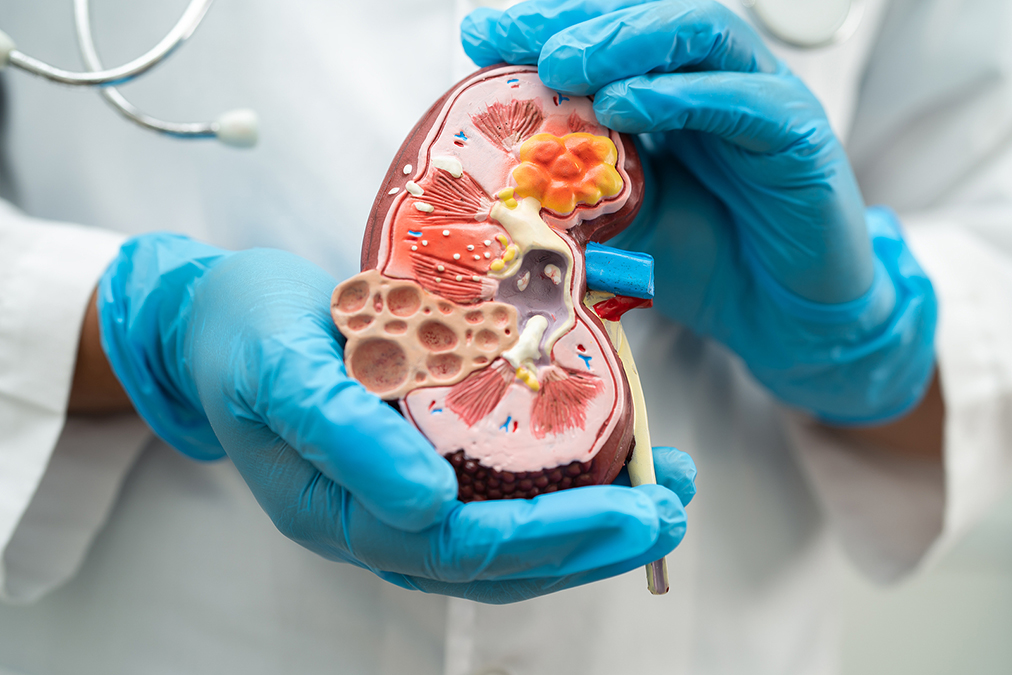 If you want to improve your Chronic Kidney Disease (CKD) using lifestyle changes, you’re probably thinking of food and exercise.
If you want to improve your Chronic Kidney Disease (CKD) using lifestyle changes, you’re probably thinking of food and exercise.
And those are important factors.
A new study in the Journal of Atherosclerosis and Thrombosis, however, reveals an even more important factor—the season of the year.
Apparently, there is a specific time of the year most people with CKD die. Fortunately, there is a simple way to avoid this.
The study, conducted in Seoul, South Korea, focused on the concept of perceived temperature, which is essentially how hot we feel.
This measure takes into account not just the air temperature but also other factors like humidity, wind speed, cloud cover, sweat, and internal heat generation through metabolism to determine the overall heat impact on the human body.
For the study, the researchers recruited a large group of 32,870 patients with CKD from three medical centers in Seoul. The study spanned over many years, from 2001 to 2018, as they wanted to understand long-term exposure to perceived temperatures.
They calculated the perceived temperature and checked how many CKD patients died and when. They adjusted for various factors that could influence health outcomes, including sex, age, body mass index, high blood pressure, diabetes, kidney function, smoking habits, alcohol consumption, and level of education.
Over an average follow-up period of about six years, the study recorded 3,863 deaths among the participants. The findings were interesting.
-
1. Both the average and maximum levels of perceived temperature were associated with an increased risk of death among people with CKD.
2. Perceived temperature was a better predictor of mortality risk than simply looking at air temperature, discomfort index, or heat index.
3. Younger patients under 65 years of age faced a higher risk of mortality related to high perceived temperatures than their older peers did.
4. The risk of death was significantly higher during the winter and spring months compared to summer and autumn.
This last finding is particularly interesting. It might mean that high perceived temperatures during the summer have lingering effects into the colder seasons.
Or it might indicate that the human body needs colder seasons, which are now becoming too hot, to alternate with the hot ones to be truly healthy.
What does all this mean for people with CKD? Are you simply going to have to accept an early death just because you can’t stop climate change?
Not at all. In fact, it’s pretty good news. Since the perceived temperature is more important than the real one, all you need to do is to take extra precautions during hot weather.
This could mean staying hydrated, seeking air-conditioned environments, taking a cool shower, applying a cool, wet cloth to your forehead and neck, removing tight clothing, and being mindful of your body’s signals for overheating.
In chronological order, these signals are heavy sweating, headaches, fatigue, dizziness, muscle cramps, nausea, vomiting, dry skin, rapid and weak pulse, shallow breathing, and disorientation.

 Overcoming IBD
Overcoming IBD Multiple Sclerosis
Multiple Sclerosis Banishing Bronchitis
Banishing Bronchitis Gum Disease Gone
Gum Disease Gone Overcoming Onychomycosis
Overcoming Onychomycosis Neuropathy No More
Neuropathy No More The Prostate Protocol
The Prostate Protocol Brain Booster
Brain Booster
 Ironbound
Ironbound
 Solution for Shingles
Solution for Shingles
 The Bone Density Solution
The Bone Density Solution
 The Ultimate Healing Protocol
The Ultimate Healing Protocol
 The Parkinson's Protocol
The Parkinson's Protocol
 The Chronic Kidney Disease Solution
The Chronic Kidney Disease Solution
 Overthrowing Anxiety
Overthrowing Anxiety The Fatty Liver Solution
The Fatty Liver Solution The Hypothyroidism Solution
The Hypothyroidism Solution
 The End of Gout
The End of Gout The Blood Pressure Program
The Blood Pressure Program
 The Oxigized Cholesterol Strategy
The Oxigized Cholesterol Strategy
 Stop Snoring And Sleep Apnea Program
Stop Snoring And Sleep Apnea Program
 The Arthritis Strategy
The Arthritis Strategy The Vertigo & Dizziness Program
The Vertigo & Dizziness Program The 3-Step Diabetes Strategy
The 3-Step Diabetes Strategy Hemorrhoids Healing Protocol
Hemorrhoids Healing Protocol The Erectile Dysfunction Master
The Erectile Dysfunction Master Weight Loss Breeze
Weight Loss Breeze The IBS Program
The IBS Program The Insomnia Program
The Insomnia Program The Migraine and Headache Program
The Migraine and Headache Program The Neck Pain Solution
The Neck Pain Solution The Menopause Solution
The Menopause Solution The Ejaculation Master
The Ejaculation Master The TMJ Solution
The TMJ Solution The Acid Reflux Solution
The Acid Reflux Solution The Fibromyalgia Solution
The Fibromyalgia Solution The Psoriasis Strategy
The Psoriasis Strategy